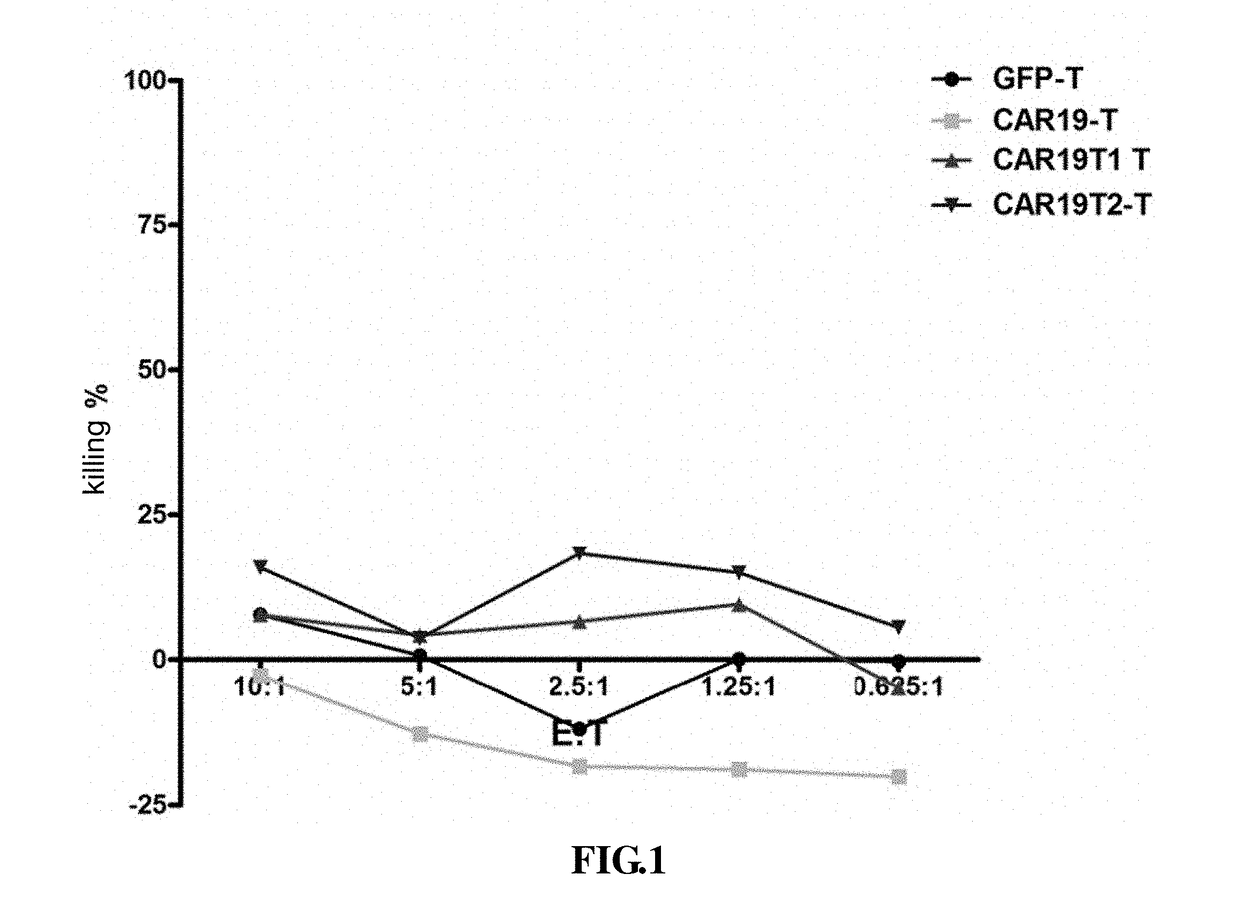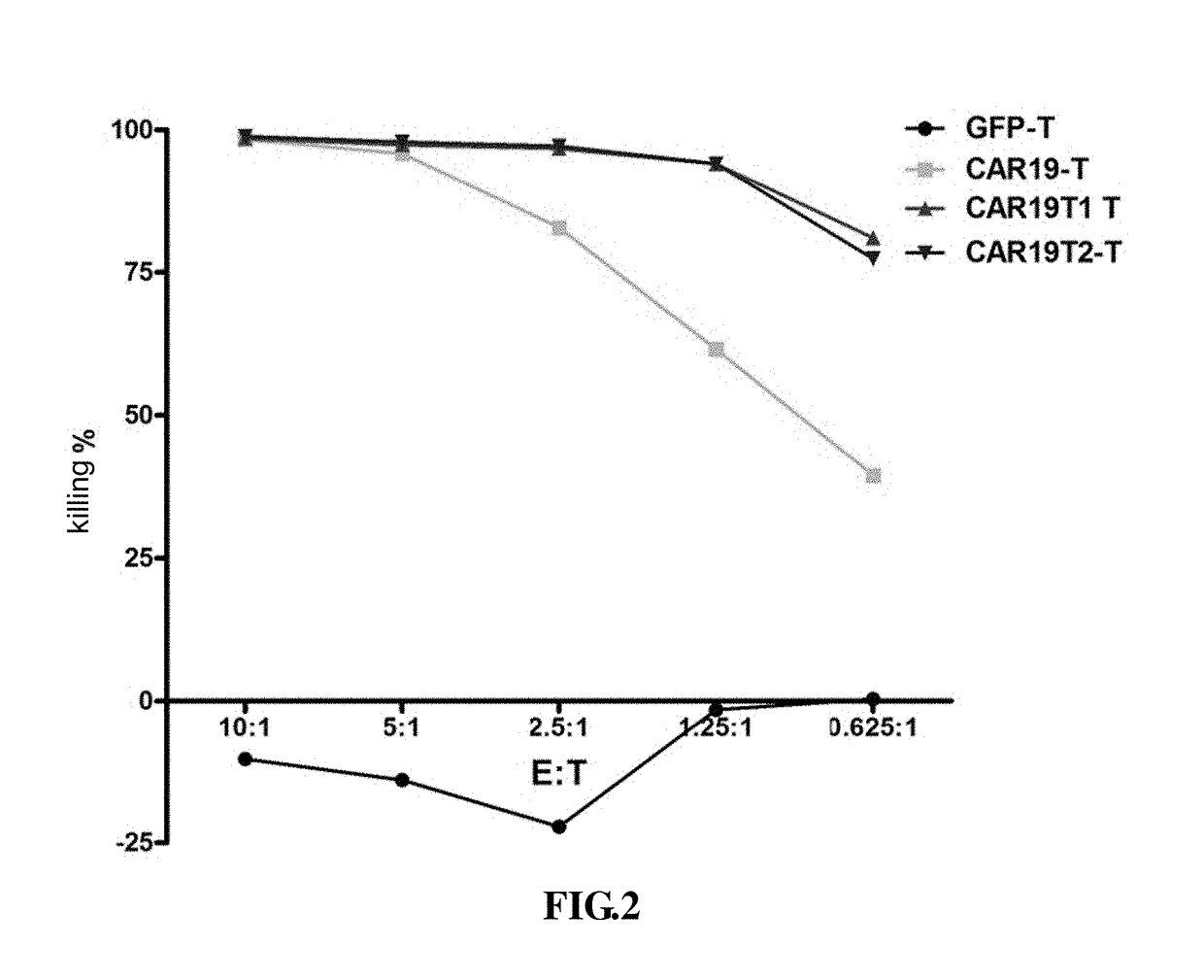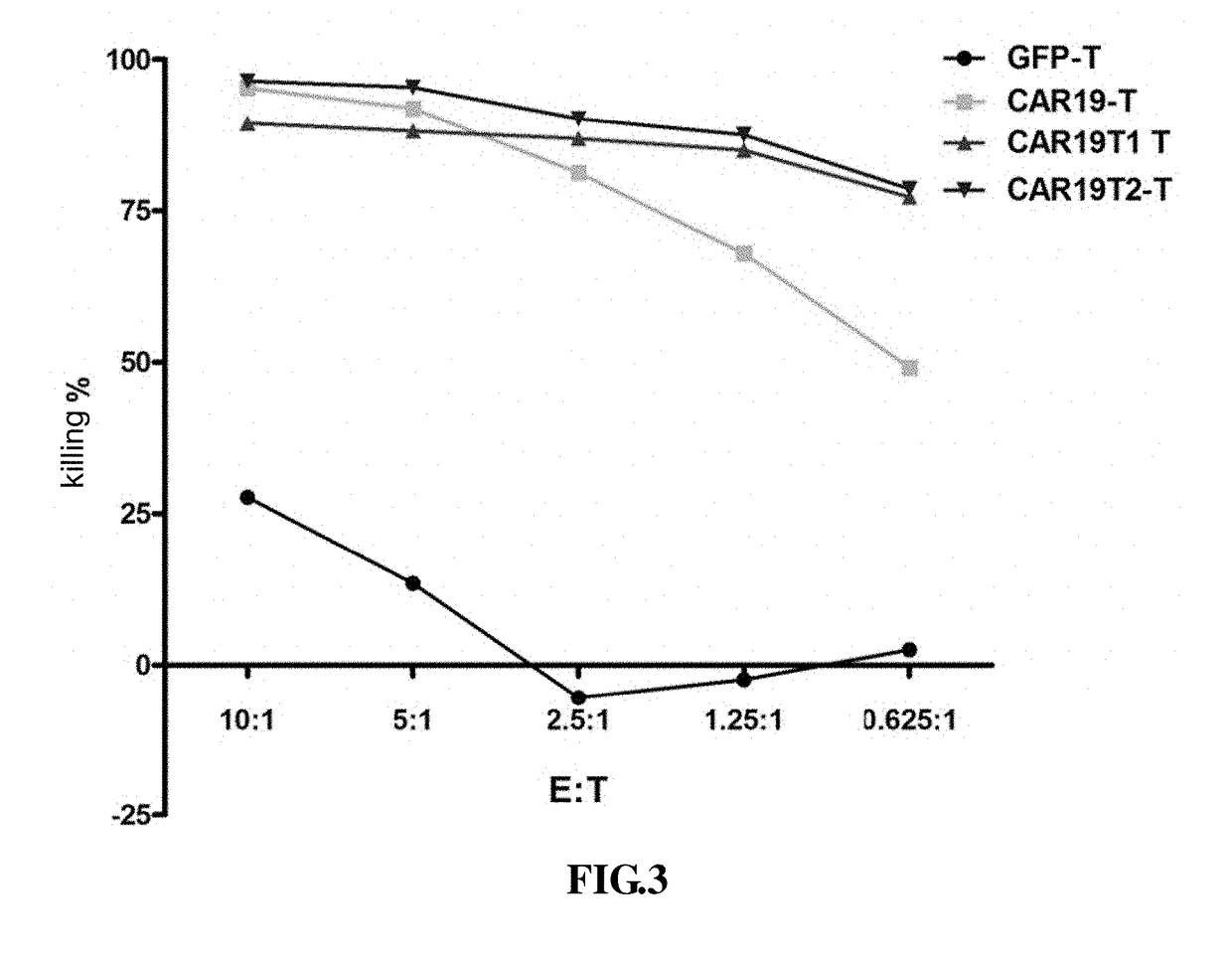Chimeric antigen receptor containing a toll-like receptor intracellular domain
a toll-like receptor and chimeric antigen technology, applied in the field of chimeric antigen receptors, can solve the problems of ineffective solid tumors and success of car t cells, and achieve the effects of increasing promoting anti-apoptosis and proliferation of car t cells, and promoting tumor immunological effect and therapeutic
- Summary
- Abstract
- Description
- Claims
- Application Information
AI Technical Summary
Benefits of technology
Problems solved by technology
Method used
Image
Examples
specific example
Example 1 Preparation of CAR19T1, CAR19T2 Plasmid
[0056]The plasmids carrying chimeric antigen receptor genes containing TLR1 and / or TLR2 intracellular domain of the present invention were prepared as follows:
[0057](1) Plasmid pUC57-CAR19 containing CAR19 gene (SEQ ID NO.1) is obtained by gene synthesis; the CAR19 gene comprises an anti-CD19 mAb ScFv (SEQ ID NO.15), CD28 transmembrane region and intracellular region, CD3ζ intracellular region.
[0058](2) The resultant plasmid pUC57-CAR19 was digested with endonuclease PmeI and SpeI, to obtain CAR19 gene, and then the CAR19 gene was connected into lentivirus vector pWPXLd-GFP to construct pWPXLd-CAR19-GFP.
[0059](3) The resultant pWPXLd-CAR19-GFP plasmid was digested with endonuclease NotI and SpeI to obtain intracellular fragment 28Z of CAR19 gene.
[0060](4) The cDNA of TLR1 and the fragment 28Z were used as templates to obtain 28ZT1 (SEQ ID NO. 9) by overlapping PCR with four primers (SEQ ID NO. 2-5); Similarly, the cDNA of TLR2 and the...
example 2
Preparation of CARMesoT1, CARMesoT2 and CAR22 Plasmids
[0064]Mesothelin monoclonal antibody scFv domain sequence (SEQ ID NO.17) was obtained by gene synthesis, and pWPXLd-CARMesoT1-GFP or pWPXLd-CARMesoT2-GFP was obtained by digesting with endonuclease PmeI and NotI, and replacing CD19 monoclonal antibody scFv domains in pWPXLd-CAR19T1-GFP and pWPXLd-CAR19T2-GFP respectively with Mesothelin monoclonal antibody scFv domain.
[0065]In addition, CAR22, an anti-CD22 chimeric antigen receptor was used as negative control of CARMesoT1 / T2. Plasmid containing CAR22 was pWPXLd-CAR22, of which the construction mainly through synthesizing anti-CD22 ScFv fragment (ie, SEQ ID NO.16), replacing anti-CD19 ScFv in CAR19 plasmid with the same by enzymatic digestion and ligation.
example 3
Packaging of Lentiviral Vectors Expressing CARs
[0066]CAR plasmids of the present invention prepared in Example 1 and 2 and the related control plasmids were used, via lentiviral packaging, to obtain 8 kinds of recombinant lentiviruses expressing GFP (blank), CAR19T1-GFP, CAR19T2-GFP, CAR19-GFP, CARMesoT1-GFP, CARMesoT2-GFP, CARMeso-GFP, CAR22-GFP (negative control) respectively.
[0067]Specific steps were as follows:[0068]293T cells were cultured in 150 mm dishes with the culture medium consisting of DMEM high glucose culture medium+10% FBS (fetal bovine serum)+1% penicillin / streptomycin penicillin / streptomycin;[0069]When the density of 293T cells in 150 mm dishes reached 80-90%, the culture medium was changed with DMEM high glucose medium+1% FBS+1% penicillin / streptomycinpenicillin / streptomycin;[0070]After replacing the culture medium and culturing for 2-6 hours, six kinds of pWPXLd-CARX-GFP plasmids (ie, including CAR19T1, CAR19T2, CAR19, CARMesoT1, CARMesoT2, CARMeso respectively) ...
PUM
 Login to View More
Login to View More Abstract
Description
Claims
Application Information
 Login to View More
Login to View More - R&D
- Intellectual Property
- Life Sciences
- Materials
- Tech Scout
- Unparalleled Data Quality
- Higher Quality Content
- 60% Fewer Hallucinations
Browse by: Latest US Patents, China's latest patents, Technical Efficacy Thesaurus, Application Domain, Technology Topic, Popular Technical Reports.
© 2025 PatSnap. All rights reserved.Legal|Privacy policy|Modern Slavery Act Transparency Statement|Sitemap|About US| Contact US: help@patsnap.com



